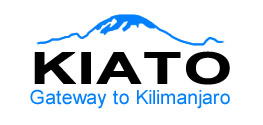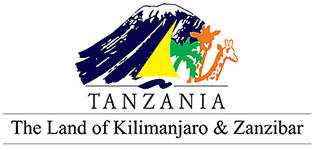There is no set age limit, however, we discourage parents with children under the age of 8 to join such a safari due to the lengthy drives and the fact that nights are spent on unfenced campsites. If parents are nevertheless convinced that their child / children are unfazed by the long driving distances and the travel time that goes with it, children are welcome to join the safari. But please keep in mind that the responsibility for each child lies with you as a parent at all times.
The minimum age for or trekking to Uhuru Peak is 10 years old. The maximum age limit depends on physical condition of the traveler, as there were cases of people summiting at the age of 93, while on the other hand some much younger trekkers failed to reach the top.
When travelling to foreign destinations it is always respectful to dress modestly and we suggest the emphasis is on comfortable clothing. It is often warm on the plains and at lower altitudes but cold in the hilly and mountainous areas; a rain jacket, fleece and good quality walking shoes/boots are essential.
A vast country and home to some of nature’s greatest events, Tanzania is accessible all year. However to see what you want, you must be there are the right place in the right time…
The vast Serengeti plains and the hills of Kenya’s Masai Mara are the setting for the world’s greatest wildlife spectacle, the 1.5 million animal ungulate (wildebeest) migration. Over 1.4 million wildebeest and 200,000 burchell’s zebra and gazelle, relentlessly tracked by Africa’s great predators, migrate over 3,000km during their circuitous annual pilgrimage in search of rain ripened grass. There exist over 10,000km2 of nutrient-rich short-grass plains in the southern Serengeti National Park while the western and northern sections are defined by their long grass and acacia woodlands.
Once the ‘short rains’ fall in November and December (sometimes as early as October) the migration moves from Kenya’s Masai Mara down through the eastern side of Tanzania’s Serengeti into its sweet and fertile southern-grass plains. It is the Serengeti’s nutrient-rich short-grass plains that consist of high levels of calcium, magnesium and phosphorus derived from volcanic ash blown for millions of years by easterly winds from the Ngorongoro Highlands that provide the vital nutrients and elements for the pregnant wildebeest and their newborn young.Here, the wildebeest and other ungulates settle between January and April, hosting the greatest concentrations of animals.
There is no bad time to visit Tanzania as each season is brimming with activity and each season has its advantages, however if possible, it is worth trying to avoid the peak tourist season, the northern hemispheres ‘winter’. June and July are particularly busy but this is also the best time for viewing the wildebeest migration and river crossings in the northern Serengeti. The dry season, particularly between June and October, is also great for trekking, which include trekking Mt. Kilimanjaro and Mt. Meru. Temperatures on the coast tend to be more bearable at this time of year and there is generally less mosquitoes. Chimpanzee tracking in western Tanzania can be done all year round however some of our favourite times are during the months of July to October when the chimpanzees are on the lower slopes of the Mahale Mountains making for easier trekking.
The wetter period of the year between November and April is the greenest, particularly in the Serengeti. This period offers the best in birding with resident species supplemented by a number of Palaearctic and intra-African migrants. The wettest months are March and April, when parts of the country may experience storms daily.
It is more reasonable to measure each day in hours walked rather than miles. Most days, other than the summit day, will begin with breakfast around 6:30 AM and departure at 7 AM. You will walk 4-5 hours with a break for lunch followed by another hour or two of hiking in the afternoon. These days are not long or difficult and you will be advised to walk slowly (“pole- pole” or “slowly, slowly” in Swahili) by your guide.
Most groups will start for the summit on ascent day at 11 PM to 12:30AM, depending on the perceived fitness of the group, the weather and the route. The pre-dawn hours, while cold, are also the calmest and clearest. The best views from the summit are at dawn. Often clouds and high winds develop not long after sunrise making the summit much less attractive and the descent more difficult. Guides who have been to the summit scores of times report that it is very rare to find it cloudy at the summit at dawn in any season. The ascent day is a very long day of hiking. Some people may require 15 hours to reach the summit and descend to the campsite for that day.
You will simply carry a day pack of about 5-6 pounds, though some people carry more or less. Your gear, not to exceed 33 pounds, will be placed inside a waterproof duffle at the trail head, and a porter will carry this for you.
Your tents are mountain-style, double-walled, mosquito-netted and durably-floored with waterproof material. While technically rated as four-person tents, they very comfortably accommodate two people. Tents are erected and packed up by the staff porters. There is enough space for tall people to stretch out and room for your gear within the tent. On the Marangu Route the huts are just large enough for four bunks built against the walls of A-frame cubicles. Tall hikers will feel cramped. Gear is stored on the floor. Wash and toilet facilities are shared and are outside of the bungalows.
Expect to eat well, amply, and on time. Your cook works with a variety of fresh, canned, freeze dried and mix ingredients to produce multi-course meals. We emphasize drinking plenty of fluids and you will have choice of beverages including tea, coffee, cocoa, milk, lemonade and water. The evening meal will include meat, soup, salad, a vegetable course and dessert. Carbohydrates come from cereals, breads, rice and pasta. Vegetarians are catered for. You may wish to bring trail snacks and protein bars, but they are not necessary.
The Great Migration, in Tanzania and Kenya, is one of nature’s greatest events, but how do you know where and when to go to actually witness it?
The vast Serengeti plains and the hills of Kenya’s Masai Mara are the setting for the world’s greatest wildlife spectacle, the 1.5 million animal ungulate (wildebeest) migration. Over 1.4 million wildebeest and 200,000 zebra and gazelle, relentlessly tracked by Africa’s great predators, migrate in a clockwise fashion over 1,800 miles each year in search of rain ripened grass.
Once the ‘short rains’ fall in November and December (sometimes as early as October) the migration moves from Kenya’s Maasai Mara down through the eastern side of Tanzania’s Serengeti into its sweet and fertile southern-grass plains. Here, the wildebeest and other ungulates settle between January and April. In April and May the ‘long’ rains set in and the migration starts moving from the depleted southern plains north to the long grass plains in the western corridor. Large river crossings on the Grumeti and Mara Rivers occur as the migration heads back into Kenya’s Maasai Mara – the season dries out and fresh grazing and water can be found in the far north. The Masaai Mara is usually at its best in August, September and October.
Tips are not included in the price and we recommend 15-20 USD per group per day for the guide and 10-15 USD per group per day for the cook.
Most nationalities can apply for a visa upon arrival in Tanzania but all travellers need to contact their respective embassies to check the latest visa regulations. Furthermore, it is the sole responsibility of each traveller to be in possession of the required documents.
Yes, we suggest that you bring some spending money for drinks, snacks, souvenirs and tips. Please only bring USD bills that have been printed from 2009 as earlier dated bills will not be accepted.
Check with your doctor and the Center for Disease Control for current recommendations. None are required for entry to Tanzania from the USA or for re-entry to the USA. If you are arriving from a yellow fever epidemic area such as Kenya, proof of vaccination is required.




